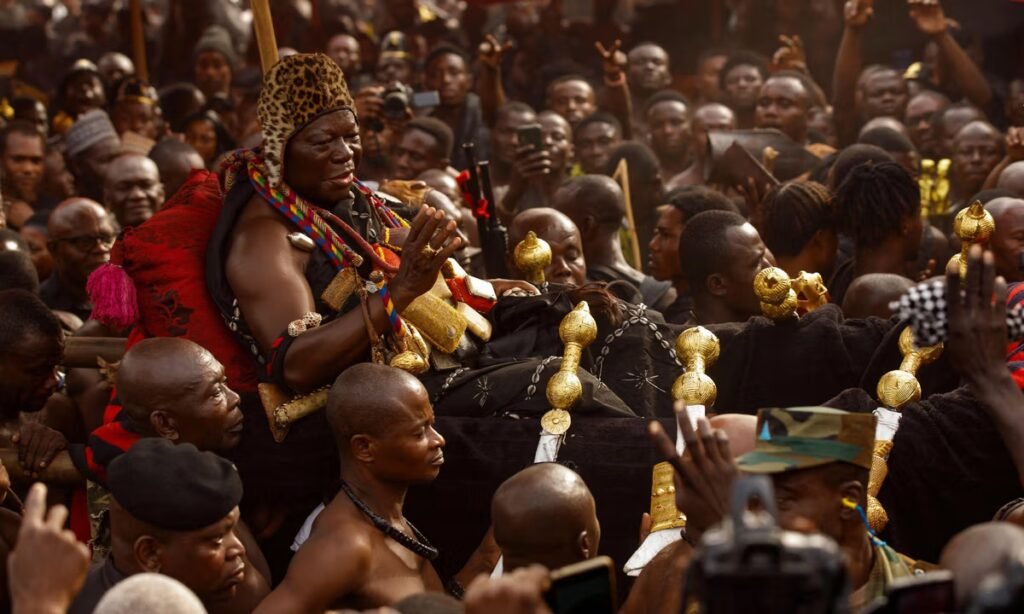The return of 130 gold and bronze artefacts from private collections to Ghana’s Asante Kingdom has been welcomed by heritage experts, who also warn that the move underlines the UK government’s lack of progress in allowing national museums to follow suit.
The Asante items repatriated by British art historian Hermione Waterfield and South African mining company AngloGold Ashanti include royal regalia, drums and ceremonial gold weights dating back to the 1870s. The returns are significant, not only because they come from private collections, but also because they have been based on the cultural importance of the artefacts themselves.
Dan Hicks, the author of The Brutish Museums and Every Monument Will Fall, describes the return as “another landmark moment in the long struggle for the restitution of looted objects” and a reminder of how much remains in private collections, whether bought through the art market or inherited down the generations from soldiers involved in military expeditions.
He adds: “While the UK’s Culture Secretary continues to stall on any progress on allowing national museums to make returns on a case-by-case basis, British non-national museums and even private individuals are moving ahead with returns.”
Caroline Angle Maguire, a historian and researcher of African art provenance, says it remains unclear whether this latest example will result in other countries making claims for the restitution of objects held in private collections. Private collectors often don’t publish their inventories, making it difficult for communities to find out who is in possession of their items of cultural significance.
Maguire told The Art Newspaper: “Museums and collectors will often rely on unclear or unknown provenance information as a reason why objects cannot be repatriated to their countries or communities of origin saying, for example, ‘if we can’t prove it was looted, we won’t be returning it’. But it seems that in these negotiations, the importance of these objects to the Asante kingdom has outweighed their provenance histories.”
She says while some of the Asante pieces have clear ties to documented cases of looting, such as Waterfield’s return of a fontomfrom drum believed to have been seized in the 1900 siege of Kumasi, others were purchased on the open market after Ghanaian independence.
“It appears that even objects with unclear provenance have been returned,” Maguire confirms. “Hopefully this will inspire more ethical returns, wherein museums and private collections return objects to source communities even if the objects’ provenance does not directly tie them to instances of violence or looting.”

